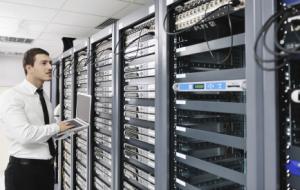Virtualisation helping to lower data centre power usage

Virtualisation helping to lower data centre power usage
An increasing take up of virtualisation has led to a decline in the growth of power usage at data centres.
This is according to a recent report conducted by Stanford consulting professor Jonathan Koomey. Between 2000 and 2005, Mr Koomey’s work found, data centre energy use doubled over the course of five years. However, while the energy used by data centres remains high, the amount of electricity consumed by data centres around the world only rose by 56 per cent between 2005 and 2010.
But last year alone, the paper estimated, data centres still accounted for between 1.1 and 1.5 per cent of worldwide energy consumption. Although, with the growth of cloud computing and virtualisation, this all looks set to change.
The research paper stated that the uptake of cloud computing will help to reduce the global energy footprint of data centres “because cloud computing installations typically have much higher server utilisation levels and infrastructure efficiencies than do in-house data centres”.
Mr Koomey identified the beginning of this trend in 2007, as data centre operators worked hard to encourage virtualisation and cloud computing. These systems tend to require less energy because they can leverage more space from a single server, lowering the overall number of servers in operation.
There was, however, one further reason behind the decline in the growth rate of energy use, and that was the economic recession. The downturn saw many companies reign in new projects, leaving them with less need for computing space. Now that the economy is getting back on track, firms are once again considering the best way to store data for their new projects, except this time virtualisation and the cloud are starting to look preferable to private data centres in terms of both the environmental and economic savings.
Businesses looking to move services into the cloud, should evaluate the performance of their existing network and consider setting up a leased line or MPLS network.







